History of Filipino Tattoos: Tattooed Mummies, Rites of Passage
Filipino tattoos have a rich history, dating back to before the Philippine Islands were colonized by Spaniards. When Spanish ships first arrived there, they were greeted by the heavily tattooed Visayas tribe and they called the islands "La Isla De Los Pintados" which meant the "Islands of the Painted Ones."
In the Philippines, tattoos were seen as a source of accomplishment and rank. Men bore ink on their chests and heads as signs of their strength as warriors. Women wore detailed lines on their arms and wrists (Visays and Mindanao tribes) or full chest and arm tattoos (Luzon mountain tribes) and they were seen as marks of beauty. Most tattoos were earned through the passage of rites ceremonies, or for accomplishing tasks. The styles varied depending on the region and tribe that the people came from.

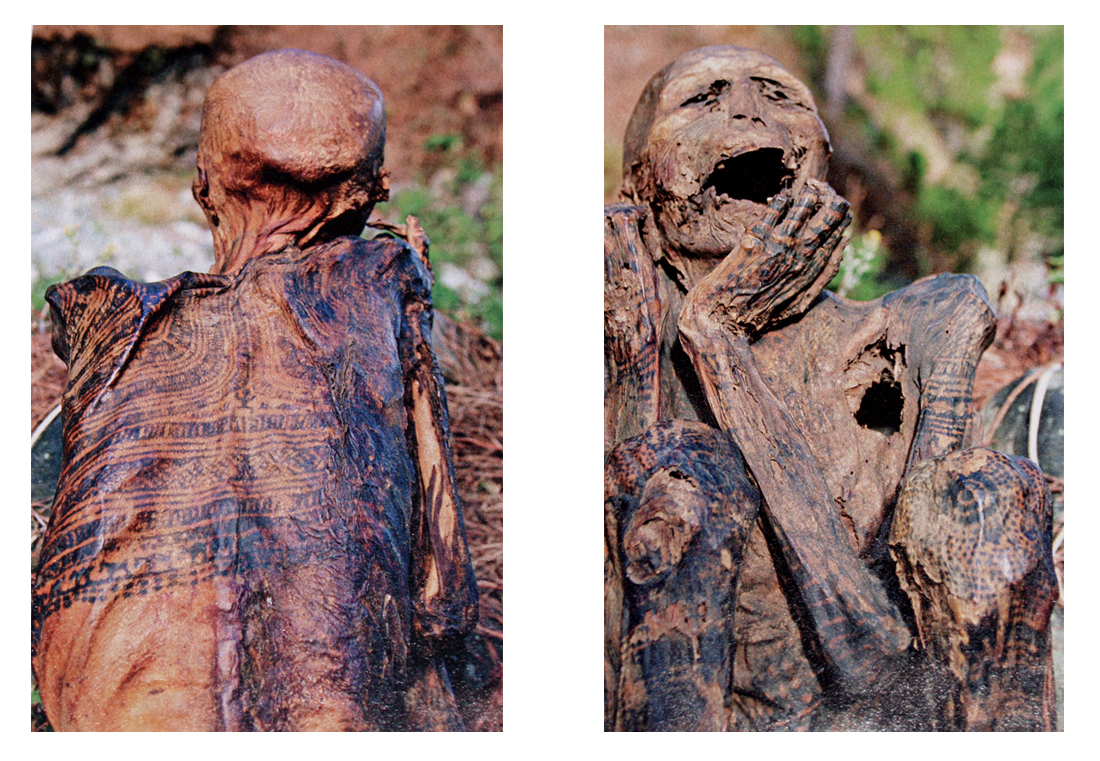


In the early 1900s, before headhunting was outlawed by American authorities, tattoos were commonly seen among the Bontoc Igorot and Kalinga tribes.
- Tattoos worn by the Bontoc Igorots men symbolized the number of human heads he took during a headhunt.
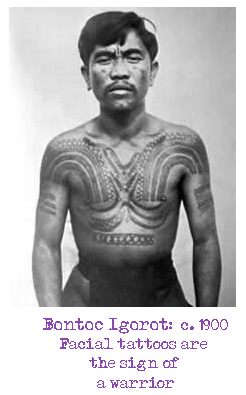
- The Kalinga tribe would tattoo their warriors on their hands and wrists after their first kill and the designs and placement would get more elaborate and more broad the more heads they acquired
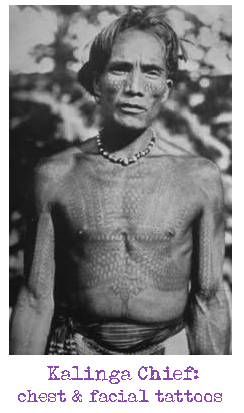
Tattooing instruments during this time were usually made from wood or animal horn, carved about 10 cm long and 2 mm thick. Needles were then affixed to the tool and the tattoo was applied by tapping with a wooden hammer. The pigment ink came from tree resin and soot and was rubbed into the wound as the tattoo was applied. Most tribes had an appointed tattooist for those worthy of receiving the tattoos.
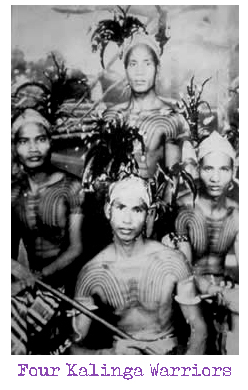
After World War II, around the late 1940s, teachers at missionary schools discouraged the practice of tattooing, so nowadays, most people under the age of sixty are not tattooed, while those older than sixty often are.
Today, tattoos are experiencing a beautiful revival amongst Filipinos and continue to gain acceptance, with traditional Polynesian themes and striking designs often adorning the collectors.
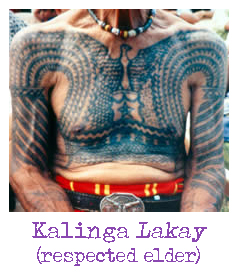

 For more about information and additional tattoo history, please visit the Tattoo Corner section of the site.
For more about information and additional tattoo history, please visit the Tattoo Corner section of the site.
 Saturday, February 20, 2010 at 9:08AM | |
Saturday, February 20, 2010 at 9:08AM | |  Email Article
Email Article 

Reader Comments (11)
My mom is from the Phillipines, so this is of much interest to me.
Thanks for sharing.
im from the philippines and im a tattoo artist, been doing it for almost 4 years so this is very interisting to me and i want to learn more about it. thank you very much for kick ass fact
Awesome article! And, now I am completely craving Filipino food. Lumpia...Pansit..I want it all.
some sic insight into history thanks
THANKS A LOT Jinxi I've been in Kalinga Apayao in Cordillera mountains were the HEAD HUNTERS WARRIORS used to stay a very old tradition thanks a lot anyway...
it's always so awesome learning about different cultures and tattoo history. those mummies are so incredible, every line of their tattoo still right there preserved forever showing who they were during life. just so cool.
very nice jinxi..
roots bloody roots :]
im planning to have a chaklag tattoo means a chest tattoo same as the picture, planning to have it when i go back to phils.
Fascinating! I've always been so deeply interested in the historical aspects of tattoos and body modification, especially in relation to their tribal meanings. The old pictures (like some of the ones posted above) with these men and their traditional tattoos are just breathtaking. Even watching modern videos of someone getting tattooed the traditional Japanese way.. I don't know if I could do it!
Do you know the Kalinga Chief's name? Please find out from your sources if you don't know.
Thanks. Love your site.
hi.. dude i love your blog!1 especially the part where the warriors need heads to gain more tattoos.. keep it up! good job!